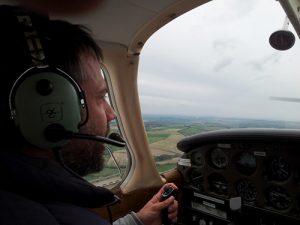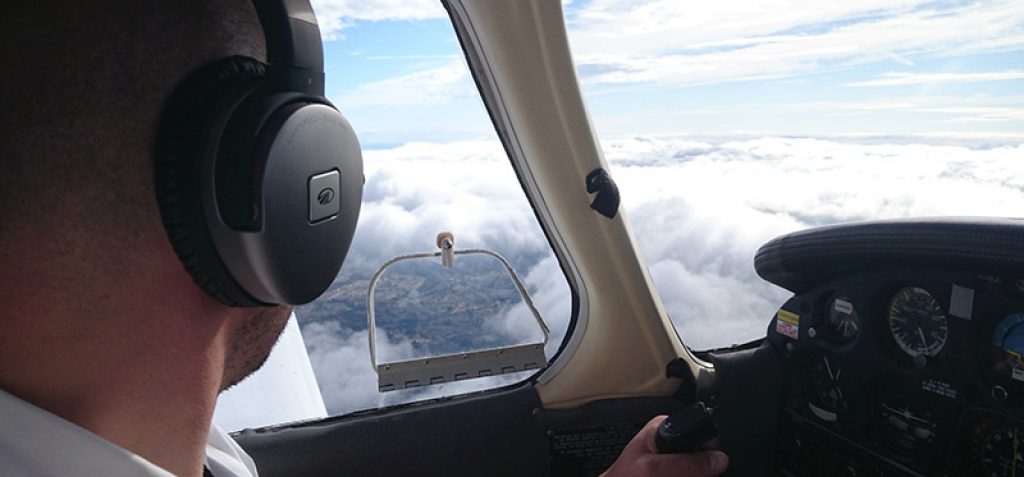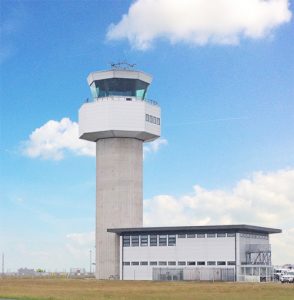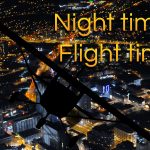
Standard Phrases
Radios are used to receive information (weather reports, altimeter settings, traffic information, airfield information), advise other aircraft of your position, and obtain clearances from ATC. Since transmissions could be misheard, and airtime is limited (especially in busy airspace) pilots and air traffic controllers use a set of standard phrases. These phrases minimise ambiguity and duration; making transmissions efficient and easy to understand.

This “standard phraseology” is laid down in CAP 413; the UK ‘bible’ for radiotelephony (RT), and should be read by all students. It specifies phraseology to be used in every phase of flight; however, if necessary, just say it in plain language. CAP 413 is extensive, but doesn’t cover every possibility.
RT Test
There are practical and written exams on Radiotelephony to pass. Whilst the written is a multiple choice exam, the practical will normally take the form of talking to an examiner on the ground using microphones and headphones. The examiner will guide you through a virtual flight during which multiple scenarios will occur, and test your radio proficiency.
The practical can be done after your Skills Test; the RT license is a separate license that comes “packaged” with your PPL. Since your radio skills are at their best after you’ve finished training, most students do the practical after their skills test, and then apply for the PPL and RT license together.
The flipside is of course that standard phrases exist for good reasons – some phrases exist because accidents have been caused by miscommunication. For example, the word “take-off” will only ever be used by a controller clearing an aircraft to do so; pilots reporting ready for take-off will use “ready for departure”, controllers passing flight plans to follow after take-off will say “after departure, turn left heading 310 degrees” and so on. This is to ensure the only time a pilot hears “take-off” is when they have actually been cleared to line up on the runway and start rolling. In the past, pilots have heard “take-off” when it wasn’t a clearance to get airborne, and started accelerating down the runway when it was blocked by another aircraft.
Having studied how to say things, you’ll need to practise saying them. There is really only one way to do this – and that’s speaking over the radio whilst airborne. ‘Transmitting’ to your instructor in a classroom will help, but there is absolutely no substitute for using the real radio in real time, whilst flying the aircraft.
You’ll also need to practise hearing them! In my experience as a flight instructor, humans pay less attention to sounds as they become overloaded. This means that busy students learning new skills (such as navigation) will tend to miss radio calls directed to them. It’s the cocktail party effect – picking your callsign out from the constant background chatter on the radio. With practice, this becomes easier, but be aware that during busy cockpit workload periods, the controller may be calling you repeatedly, without you noticing. Take the time to pay attention to the radio.

Aviate, Navigate, Communicate
Having said that, a pilot’s airborne priorities are to Aviate, Navigate and then lastly to Communicate. You’ve got to fly the aircraft first! Students will occasionally become anxious to make radio calls above all else. Remember an aircraft will fly just fine without a radio – but not the other way around.
Therefore, one of the most powerful phrases is “standby”; i.e. wait. It’s not just for controllers to use. If you’re busy, and need to concentrate on flying the aircraft, you are perfectly entitled to ask the controller to “standby”. If they need to urgently talk to you, they’ll tell you! Otherwise, they will patiently wait – after all, they’re down there in a non-moving control tower (probably with a cup of tea and possibly a biscuit), whilst you’re up there moving through the skies at speed. When you’re ready, ask ATC to “pass your message”.

Another useful phrase is “say again”. If you didn’t hear what the controller said, ask them to repeat. Controllers are also human, and are perfectly capable of accidentally speaking too fast for a student to follow.
Thinking Ahead
Students will sometimes freeze on the radio whilst still pressing the transmit button. This can be embarrassing, and will block the frequency for others with dead air. It may sound obvious, but the key is to know what you’re going to say before you say it. The classic example is a student requesting control zone entry (to do so the controller needs certain bits of information), and confidently relaying their aircraft registration, type, but when they get to “current position”, saying ums and ahhs for long seconds, because they didn’t figure out what it was before they pressed the button. Also, When changing to a new frequency, remember to wait a few seconds before transmitting. Two other stations could be in the middle of an exchange or readback; it’s good RT discipline (and manners) to wait until they’ve finished.

It’s recommended practise to write down cleared altitudes, pressure settings, frequencies and so on as you receive them. To ensure you’ve received these critical pieces of information correctly, you’re required to read them back to the controller. It therefore makes sense to have your pen in your hand ready to go – before you press the transmit button. But, at the same time – you’ll still need to fly the aircraft, and look outside as well. Multitasking these jobs will come with practice.
Learning ‘the talk’ is often compared to learning another language. Fluency will come with knowledge and practice. As you progress through your training, you’ll get accustomed to using the radio, to the point where correct procedure becomes second nature.
Happy aviating!







